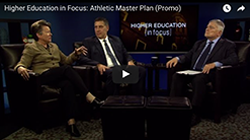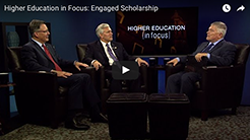I recently accepted an invitation to a brown-bag lunch. I need to do it again. And again. What did I learn? Infectious disease is a growth area. New infections, return of old ones – uncomfortable words like Ebola, malaria, herpes, measles, avian flu, white nose bat fungal virus are front and center – human viruses, animal viruses, and plant viruses. The world is begging for real world solutions to resistance evolution in insects, weeds, pathogens and cancer. We can’t manage these diseases or deploy our resources and solutions if we can’t understand their evolution and their transmission. We gain a tremendous advantage over outbreaks and epidemics if we can move from a world that reacts to one that is able to predict the occurrence of a disease outbreak. Imagine how powerful it would be to actually predict an outbreak before it happened, and then to marshal our forces to limit its impact. No single department or college can manage these problems alone. We must put science, agricultural science and medicine together. And that is exactly what Penn State is doing.
My invitation for lunch came from the Center for Infectious Disease Dynamics (CIDD), which is housed in the Huck Institutes of the Life Sciences. CIDD brings faculty together from 5 colleges and 15 departments. Their collaborative grants top $20 million a year. The room was packed with faculty, post-docs, graduate students and undergraduates. Tackling infectious diseases is a growth area at Penn State – state-of-the-science fundamental research leads the way, but it is followed by amazing activities in vaccine development, virus detection, and epidemic modeling. The research advances are nothing short of stunning. And CIDD is living our land-grant mission of teaching and service, as well as research. Imagine, the online course “Epidemics-The Dynamics of Infectious Diseases” draws 30,000 active participants from 190 countries. “Plant Village” is the world’s largest library and social network on plant health with 1.5 million views in two years! And, the list goes on.
In a single lunch, I was reminded about the promise that is Penn State. We have the ability to bring together the power of multiple colleges and programs to create a comprehensive approach to health and well-being. It is now one of the most important strategic goals for Penn State.
Where is my next lunch?
And, speaking of health and food, a group of our students stopped by to ask me to become a part of the Nutrition Habit Challenge for 2016 – I registered and gave up dessert for the month of February! The Challenge has lots of choices, which promote good food health. Our students are involved in so many worthwhile endeavors — and I am happy to participate.






